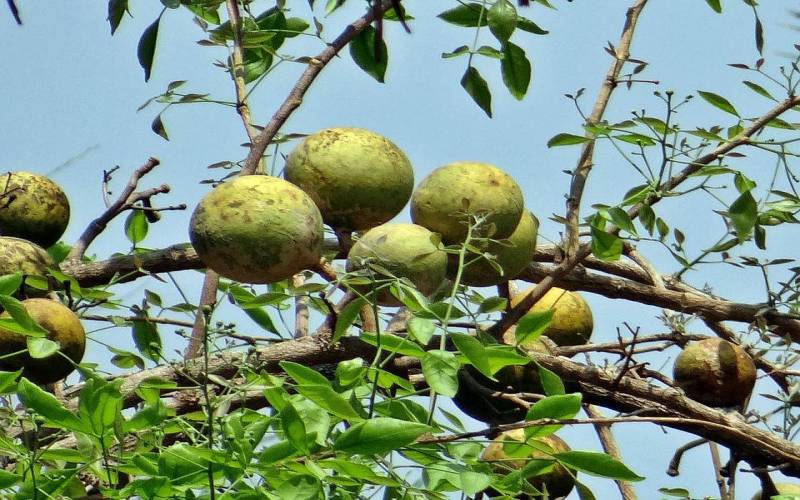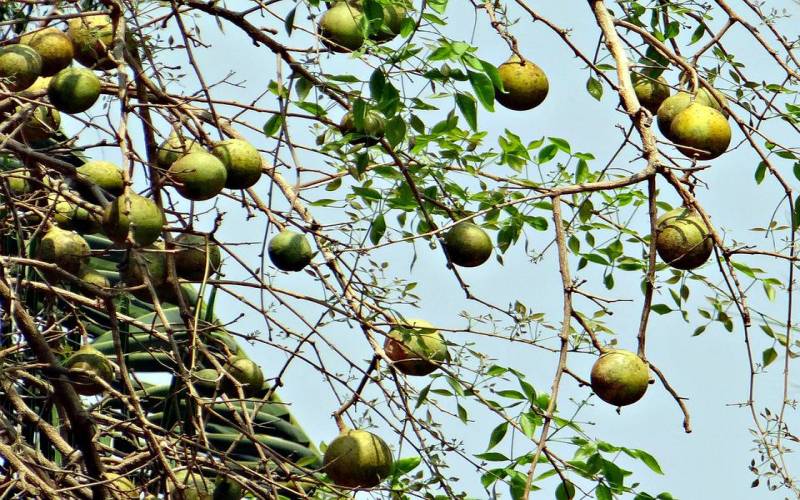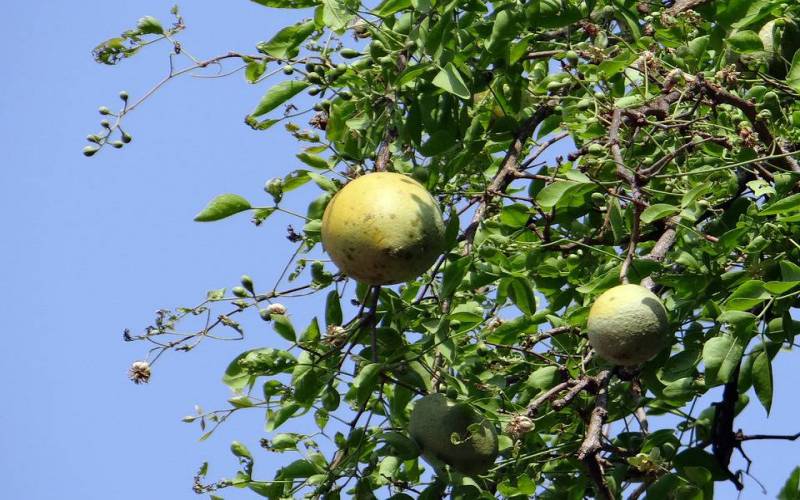Bel Tree, India
In Hinduism, the bel tree is revered as a sacred and holy tree, also known as Aegle marmelos. The leaves of this tree are trifolic, meaning they are divided into three leaflets, and are thought to represent Lord Shiva's 'trinetra,' or three eyes. The leaf also represents the sacred trinity of Brahma, Vishnu, and Mahesh, i.e. Shiva, in Hindu mythology.
The widely adored Bel leaf (bilvashtakam) or Bel patra is also said to be Lord Shiva's favourite, in addition to all the symbolisms associated with it. This leaf is one of the six sacred objects used to worship Lord Shiva, according to the Shiva Purana. It's also used to worship a lot of Hindu gods. According to Hindu texts, the Bel tree arose from the sweat droplets of Lord Shiva's bride, goddess Parvati. This is why the giving of Bel patra is considered so important in Hindu puja. A tree appeared on the enormous Mandrachal mountain after sweat droplets dropped from the goddess Parvati's brow, according to a passage from the Skanda Purana.
It was given the name 'Bilva' by the devi, who is claimed to live in the tree in all of her forms. Because the goddess Parvati is thought to reside in every part of the Bel tree, it is regarded as the best tree to worship Lord Shiva. It is stated that anyone who touches the Bel patra gets cleansed of all negativity, sins, and illnesses. The therapeutic and healing powers of Bel patra are mentioned numerous times in Hindu writings and scriptures. Its three gunas (components), Sattva, Rajas, and Tamas, are represented by its trifoliate shape. The positive energy is thought to be Sattva, whereas the negative energy is Tamas. Bel leaf is a natural antibacterial and antifungal that is very good for your health.




